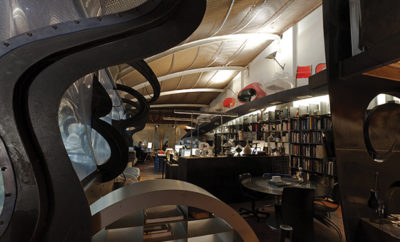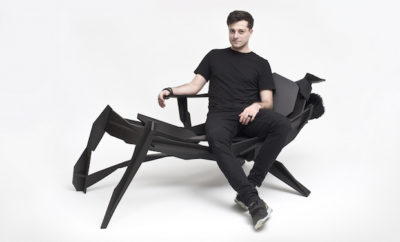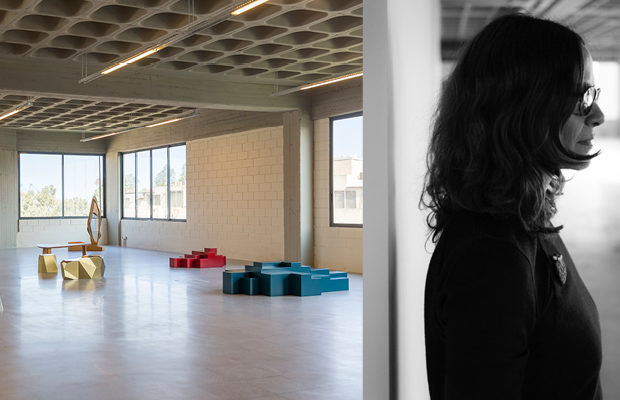
Feature
Karen Chekerdjian’s Brave New Beirut
THE DESIGNER’S VAST NEW STUDIO SPACE JUST OUTSIDE BEIRUT REFLECTS HER NEED TO CREATE LARGER, MORE SCULPTURAL WORKS
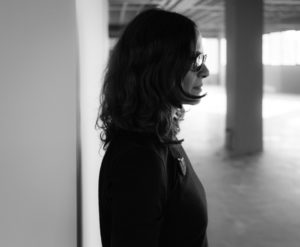
ALAIN SAUMA PHOTO
WHEN SHE OPENED HER EPONYMOUS store near the Port of Beirut in 2010, Lebanese furniture and product designer Karen Chekerdjian was heading into uncharted territory. Her sleek shop and studio stood out among the simple commercial outlets serving the nearby port. But her gamble paid off: the port area is now home to galleries, restaurants, and fashion outposts.
Just as the area reached its peak in popularity, Chekerdjian decided to relocate: in September 2016 she opened a new 6,500- square-foot studio and gallery in Bourj Hammoud, a mainly Armenian neighborhood that officially lies outside Beirut’s city limits. “It was hard to move,” Chekerdjian says. “All of my ideas, energy and input were invested in my old store. But I outgrew the space.”
Parts of Bourj Hammoud, with its array of clothing and jewelry stores and artisan workshops, are particularly engaging. But the section where Chekerdjian’s new space is located is industrial, with many abandoned buildings. Lying close to Karantina, where one of the Lebanese Civil War’s bloodiest battles took place in 1976, the area remains derelict and neglected. Chekerdjian’s building was once home to a tannery and had been empty for decades. “I like to invest in areas that are abandoned,” the designer says. “This neighborhood is great, but no one is putting energy here.”
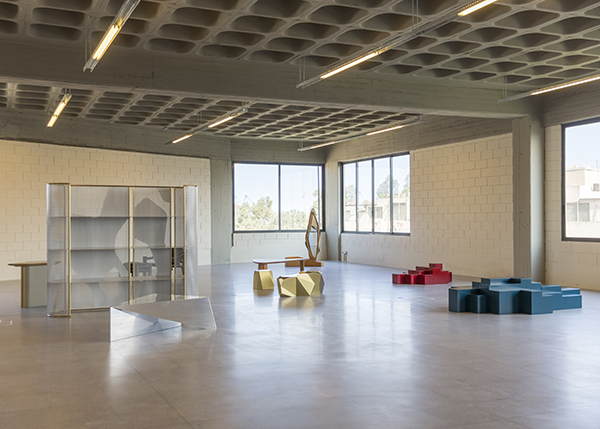
Designer Karen Chekerdjian’s new studio in Bourj Hammoud, a neighborhood on the outskirts of Beirut. Several of Chekerdjian’s signature pieces are on display in her new studio and gallery, including the crushed aluminum Confessional screen, 2012 and two Platform coffee tables, 2009. | NADIM ASFAR PHOTO
Chekerdjian’s beginnings were in advertising; she cofounded one of the first branding companies in the Middle East, but she really came into her own in 1997, when she decided to pursue a master’s in industrial design at Milan’s Domus Academy under the mentorship of Massimo Morozzi, cofounder of Archizoom. She worked with Morozzi at Italian furniture design company Edra before returning to Beirut, where she launched her design studio in 2001.
Her first designs were the spherical Rolling Stone containers; the stainless steel Hiroshima lamp, with its elegant, bomb-inspired shape, in a nod perhaps to Beirut’s history of violence; and the Living Space chair, made from wood and rattan, and easily transformed into a table, stool, or rack. All three pieces served to define her design style—at once brutal and graceful, mirroring her home city of Beirut—and are still in production today, albeit in different materials. The newer Hiroshima III lamp, for example, is available in brushed pink copper, in a limited edition series of ninety-nine pieces.
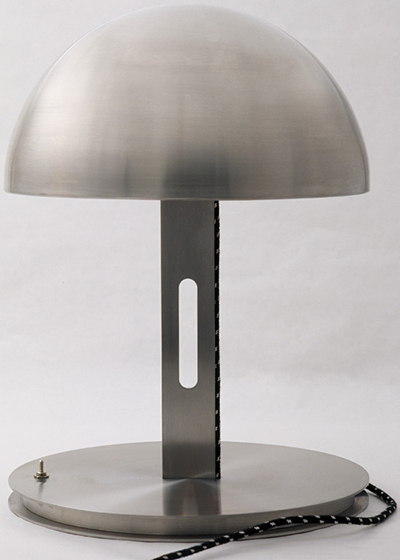
The Hiroshima I lamp, made of mirror-polished stainless steel, is an exploration of the “dichotomy of war and exposes the unhealthily seductive aesthetic at work in the design of many weapons of destruction.” | NADIM ASFAR PHOTOS
“My scale changed in 2014, when I created new pieces for the Beirut Art Center’s Trans|Form show,” Chekerdjian says. The exhibition featured giant pieces, including coffee tables and screens that skirted a fine line between furniture and sculpture. Their size makes them as suited to a vast living area as they are to a museum space. On the heels of the BAC show, the works were featured at Tony Salamé’s Metropolitan Art Society in Beirut, and then by the Carwan Gallery at Design Miami in both Florida and Basel. This past summer they landed at the Institut du Monde Arabe in Paris, in a landmark exhibition curated by Chekerdjian that featured her distinctive designs artistically displayed amid the museum’s permanent collection.
The studio relocation coincided with the end of Chekerdjian’s Paris show, and she now has enough room to welcome her large works back to Lebanon. The space itself is simple: gray slate floors, white walls, large rectangular tables serving as workstations. On one wall, an open kitchen functions as a convivial meeting place. Windows wrap around the entire space, letting in tremendous light, with limitless views of sky, sun, trees, clouds, and sea. There’s a palpable feeling of serenity, conducive to boundless creativity.

Last spring, Paris’s Galerie Dutko staged an exhibition of Chekerdjian’s furniture at its Île Saint Louis location, featuring pieces such as her Terra Continens table, 2014. | JÉRÉMIE BEYLARD PHOTO
No walls block the easy flow of the space. Her designs themselves are the focus, much as they would be in a museum or art gallery. There is the black lacquered wood Platform A coffee table, cubist and geometric, shimmering under the natural light, and the intriguing Confessional screen in brushed aluminum, designed to afford privacy while offering a forbidden glimpse through tiny openings. The limited edition Iqar table is also here, glimmering in mirrored polished aluminum. And soon, the larger pieces, like the otherworldly, arched Half Rainbow, made from polished stainless steel or copper, will populate the room.
Looking toward the near future, Chekerdjian plans to sell her new Christmas Series jewelry at the Bon Marché department store in Paris. Some of her larger home furnishings, such as the mahogany, brass, and copper Terra Continens table and the mahogany and rattan Living Space III bench, are available at Galerie Dutko on rue Bonaparte (following a successful exhibition earlier this year at Galerie Dutko’s second location on the city’s Île Saint Louis). The designer is also experimenting with new materials, most notably marble and high-pressure laminate, which was popular in furniture during the 1950s and 1960s and is now produced by Polyrey.

Chekerdjian’s sculptural Living Space III serves numerous functions, from lounger and coffee table to stool and magazine rack. | TAREK MOUKADDEM PHOTO
While Chekerdjian acknowledges that the scale and scope of her designs are changing, she refuses to label her work. “The press says that my work is at the limit of sculpture, and I have to decide if I can stay on this edge. I’ve also been advised to stop creating small objects, but I can’t. I need to give poetry and meaning to objects that you use on a daily basis in your home. I go wherever my dreams take me.”


